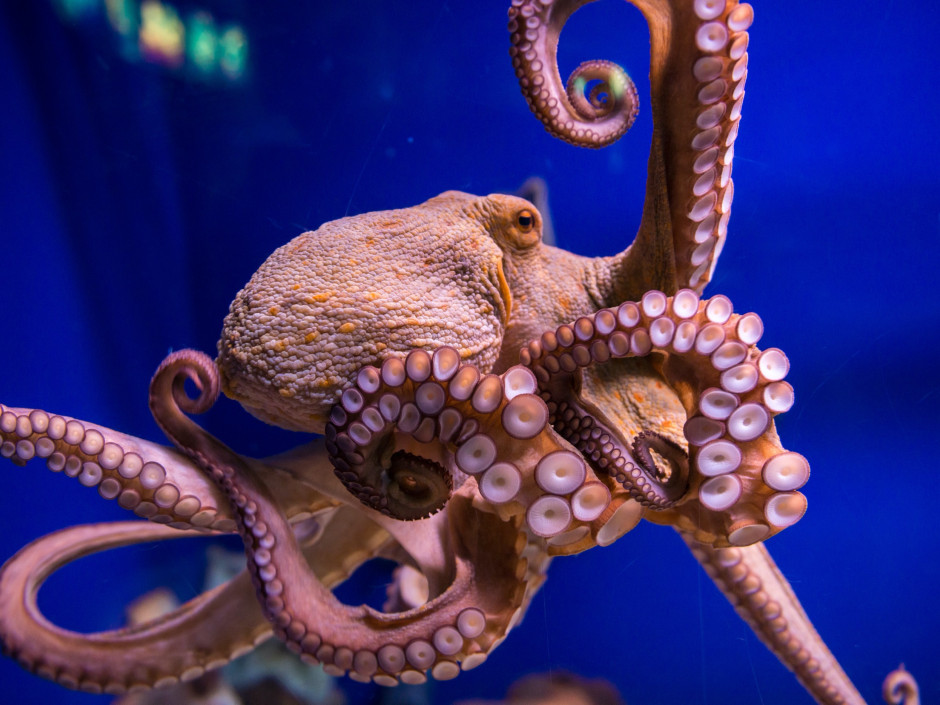The octopus in us
Khalil Iskarous is an associate professor of Linguistics at the University of Southern California and holds a PhD in Linguistics from the University of Illinois. Originally from Egypt, he has studied and worked in the USA since his teenage years. His research interests include studying endangered languages and experimental methods in linguistics as well as computational linguistics, and he has also worked extensively in the fields of motor control of the tongue and hydrostatic skeletons. He was in Bolzano for the recent conference organized by the Associazione Italiana Scienze della Voce (AISV) entitled “Speech on the Natural Context: Models and Methods for the Analysis of Speech under Real Communicative Conditions” where he held a keynote talk and workshop.
Professor Iskarous, could you tell us about your talks at the conference?
I research linguistics, particularly aspects of phonetics and computational linguistics and there have recently been many technological innovations in the field. My workshop entitled “Tutorial to Optimality Theory and Articulatory Phonology as dynamics” focused on how ideas from mathematics have influenced studies in speech production. Using certain mathematical principles, we can use dynamical systems, which originally come from mechanics, to understand how speech is produced. My keynote speech, “Dynamical Theories of Language Production: Langue and Parole in Optimality Theory and Articulatory Phonology”, argued that the dynamical nature of OT and AP makes them highly amenable to inform and be informed by the machine learning approaches to modeling speech in a natural context. In other words, it may be that theoretical and technological advances in the study of the sound structure of language have far more in common than previously suspected.
So your trip to Bolzano was for this conference?
Actually, this conference was only one reason why I came to Bolzano. One of my main research areas is studying endangered languages. In the future we are going to retain only a fraction of the languages that currently exist, so what I do is document endangered languages with the aim of preserving them or revitalizing them. I have been involved in a project in Taiwan where we documented near-extinct Austronesian languages – those are the languages that were present on the island before Chinese arrived – and together with colleagues and students, we collected data on the languages including collecting and documenting recitations of myths. The problem with documenting near-extinct languages, however, is that it takes a very long time to annotate everything and although modern technology helps significantly, I am also looking at how commercially successful applications can be adopted to help with this process. So I was also here in Bolzano because I went to the Val di Fassa - one of my next projects is to investigate the Ladin spoken in that valley. I came to meet representatives from local cultural associations and then this summer I will be coming back to the valley with some of my students to document the language and by doing so, improve methods to investigate these phenomena. So we’ll be doing similar work to what we did in Taiwan but with the aim of improving how we collect and document our data.
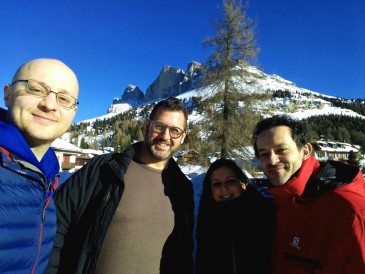
You have also worked extensively on motor control, especially with relation to the tongue. Could you tell us more about that?
Despite its appearance, the tongue is in fact a very complicated organ as it has ten different muscles that work together. Although humans are vertebrates, the tongue is an invertebrate, meaning it is entirely without bones. It works in a very similar way to an octopus or a worm. I have been involved in a 5-year project in the US to investigate how the tongue moves and particularly what happens to the tongue with the onset of Parkinson’s disease, a degenerative condition causing tremor and motor impairment. A feature of this disease is that often the tongue becomes much more rigid than it normally is, thus impairing the speech of people who suffer from this condition. However, as it is difficult to study this aspect of people who have the disease, and obviously we can’t do extensive experiments on them, we have concentrated on worms and octopuses.
Could you tell us more about your work on worms?
The work on worms has helped us understand better the effects of Parkinson’s. We worked with a certain type of worm that is only 1 mm long and has no brain, no heart and no eyes. It’s quite a famous worm in the scientific community as its genome was figured out before the human genome and although it is biologically very different to us, it is chemically similar. As such, it is perfect to work on. This worm, despite being so simple biologically, has eight cells that produce dopamine, which in humans is a neurotransmitter that sends signals to nerve cells and is involved in motor control. Parkinson's disease is caused by a loss of dopamine-secreting neurons in an area of the brain. It has been discovered that if this worm doesn’t produce dopamine, its movements are impaired. Consistent with this discovery, we have developed a technique that simulates Parkinson’s disease so that we can understand better how this disease develops.
And your work on octopuses?
As far as octopuses are concerned, I collected data with several colleagues in Okinawa in Japan, which is famous for its octopuses – the warm sea conditions make it much easier to approach them than elsewhere. We collected data on these fascinating invertebrates, looking at how they move and how their motor controls work. Despite some being very large, octopuses are extremely flexible so this flexibility was investigated to shed light on how our tongues work. We also looked at their body patterning systems. Octopuses are well-known for changing colour and in fact they can have up to 1 million sacs of colour on their bodies arranged in three layers. If a sac is activated, the colour is visible but if it isn’t activated, the colour isn’t visible. This is why octopuses can appear to have stripes and spots of a multitude of colours – even at the same time - or can be a solid colour. We assume this has something to do with camouflage but they have also been observed to be stripy when the background is not. In fact when they are mating, males have been observed to have colours on one side of their body to attract a female and the other side of their body is a completely different pattern and colour to scare away other males.
What connection is there with your work on octopuses and your talks in Bolzano?
Well, basically my focus is on the fact that so much of what I am studying now is related to dynamical principles and what was first presented by famous scientists such as Isaac Newton. The study of the body patterning systems of octopuses, for example, can be partly based on Alan Turing’s work on Morphogenesis which describes the way in which natural patterns such as stripes, spots and spirals may arise naturally out of a homogeneous, uniform state. So my whole message is that because so much of what we are investigating in 21st century science is based on some of the principles of famous mathematicians like Newton and Turing, students should really pay attention in their algebra and geometry classes – the ideas presented in these subjects are the foundations of modern technology and scientific research.
Related Articles
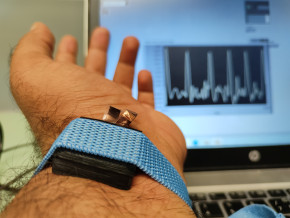
Tecno-prodotti. Creati nuovi sensori triboelettrici nel laboratorio di sensoristica al NOI Techpark
I wearable sono dispositivi ormai imprescindibili nel settore sanitario e sportivo: un mercato in crescita a livello globale che ha bisogno di fonti di energia alternative e sensori affidabili, economici e sostenibili. Il laboratorio Sensing Technologies Lab della Libera Università di Bolzano (unibz) al Parco Tecnologico NOI Techpark ha realizzato un prototipo di dispositivo indossabile autoalimentato che soddisfa tutti questi requisiti. Un progetto nato grazie alla collaborazione con il Center for Sensing Solutions di Eurac Research e l’Advanced Technology Institute dell’Università del Surrey.
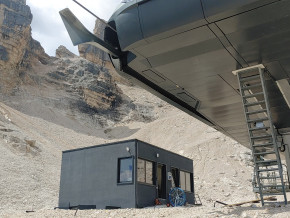
unibz forscht an technologischen Lösungen zur Erhaltung des Permafrostes in den Dolomiten
Wie kann brüchig gewordener Boden in den Dolomiten gekühlt und damit gesichert werden? Am Samstag, den 9. September fand in Cortina d'Ampezzo an der Bergstation der Sesselbahn Pian Ra Valles Bus Tofana die Präsentation des Projekts „Rescue Permafrost " statt. Ein Projekt, das in Zusammenarbeit mit Fachleuten für nachhaltiges Design, darunter einem Forschungsteam für Umweltphysik der unibz, entwickelt wurde. Das gemeinsame Ziel: das gefährliche Auftauen des Permafrosts zu verhindern, ein Phänomen, das aufgrund des globalen Klimawandels immer öfter auftritt. Die Freie Universität Bozen hat nun im Rahmen des Forschungsprojekts eine erste dynamische Analyse der Auswirkungen einer technologischen Lösung zur Kühlung der Bodentemperatur durchgeführt.
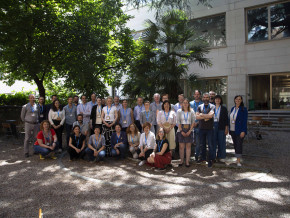
Gesunde Böden dank Partizipation der Bevölkerung: unibz koordiniert Citizen-Science-Projekt ECHO
Die Citizen-Science-Initiative „ECHO - Engaging Citizens in soil science: the road to Healthier Soils" zielt darauf ab, das Wissen und das Bewusstsein der EU-Bürger:innen für die Bodengesundheit über deren aktive Einbeziehung in das Projekt zu verbessern. Mit 16 Teilnehmern aus ganz Europa - 10 führenden Universitäten und Forschungszentren, 4 KMU und 2 Stiftungen - wird ECHO 16.500 Standorte in verschiedenen klimatischen und biogeografischen Regionen bewerten, um seine ehrgeizigen Ziele zu erreichen.
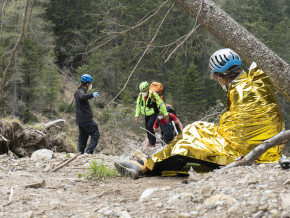
Erstversorgung: Drohnen machen den Unterschied
Die Ergebnisse einer Studie von Eurac Research und der Bergrettung Südtirol liegen vor.
